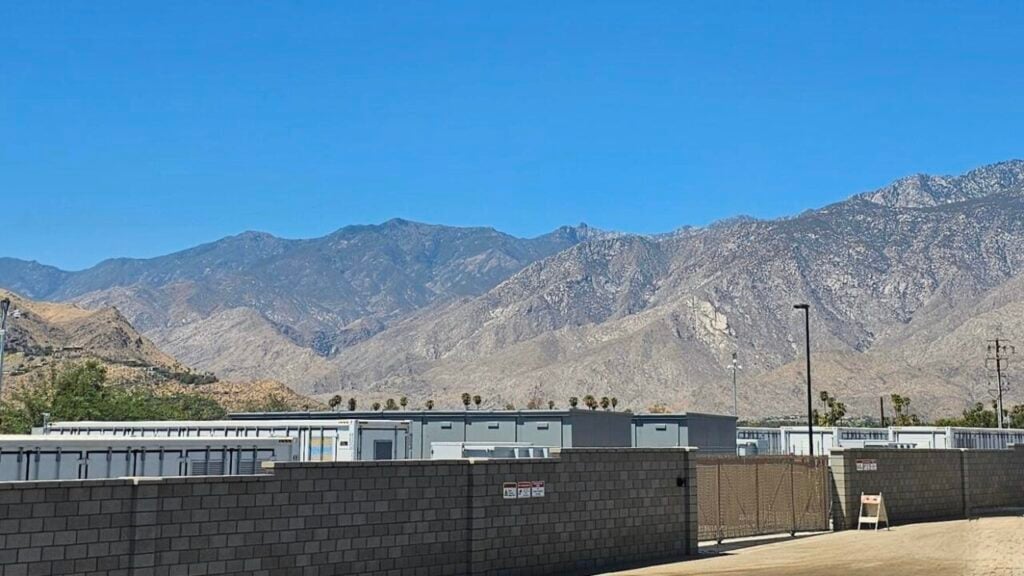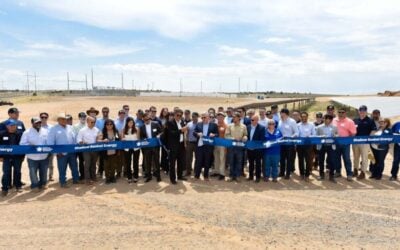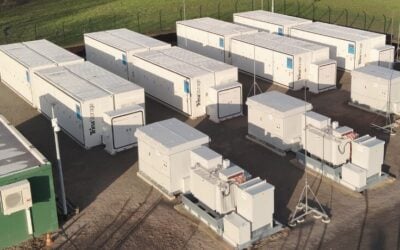
California and Texas have been “really good proving grounds” for energy storage technology, according to the CEO of developer Fullmark Energy.
Chris McKissack said that while other regions of the US are increasingly of interest, California’s CAISO and Texas’s ERCOT grid and wholesale markets will most likely dominate his discussions with customers and partners at the upcoming RE+ solar PV and energy storage trade show taking place in Las Vegas, Nevada, in September.
“I expect to be talking to people about California and Texas. I think they really do remain the most stable profiles for energy storage. They’ve been two really good proving grounds for energy storage,” McKissack told Energy-Storage.news in an interview.
Fullmark Energy is a developer operating under a build, own and operate (BOO) business model. It was launched in 2018 under the name Hecate Grid and started as a joint venture between clean energy developer Hecate Energy and investor InfraRed Capital Partners.
Try Premium for just $1
- Full premium access for the first month at only $1
- Converts to an annual rate after 30 days unless cancelled
- Cancel anytime during the trial period
Premium Benefits
- Expert industry analysis and interviews
- Digital access to PV Tech Power journal
- Exclusive event discounts
Or get the full Premium subscription right away
Or continue reading this article for free
It rebranded as Fullmark earlier this year, marking what the company said was a transition from a primary focus on project development to “a fully integrated energy storage company that develops, finances, builds, owns, and operates standalone BESS projects across the US.”
McKissack said that other ISO and RTO regions, such as PJM, SPP, and MISO, are becoming increasingly interesting. However, Fullmark’s initial portfolio of four projects, carried over from the Hecate Grid days, is in California. Three are now complete, and the fourth is under construction.
The portfolio, Redwood, includes Desert-Carris and Ortega, two 20MW/40MWh projects that Fullmark announced as online this month, Johanna, a 20MW/80MWh system that went into operation in 2021, and San Jacinto, a 65MW/130MWh system nearing completion.
Our interview coincided with news announced yesterday (27 August) that Fullmark Energy has hired cloud-based battery data analytics provider TWAICE to support the four projects in Southern California.
The Johanna project is already onboarded to TWAICE’s analytics platform, which provides data, including state of charge (SoC) calculations, cell, module, string, system and power conversion system (PCS) level monitoring and equipment health.
TWAICE claims the software solution offers much better system operation and performance visibility than an energy management system (EMS) provided by an energy storage system integrator or OEM alone.
Battery storage: ‘Not just a set and forget it’ technology
Analytics providers TWAICE and rivals like ACCURE or PowerUp have argued that their technology allows operators to detect faults early enough to prevent failures, including thermal events that can lead to fires, and assure high levels of availability for peak events or grid signals to deliver ancillary services.
“What’s different about battery storage is that it’s not just a ‘set it and forget it’ system,” Fullmark Energy’s Chris McKissack said.
“I’m not saying that other systems are easy to build or easy to operate, but there’s another dimension to battery storage that doesn’t exist with other renewable assets, which is that you actually have to make a lot of day-to-day decisions in how to dispatch, how to operate and how to optimise the system.”
The need for deeper visibility and greater control over an asset’s daily and lifetime operation has spurred the adoption of analytics platforms by a growing number of operators. Analytics is also impacting areas like insurance and warranties, with TWAICE, for example, partnering with insurance provider NARDAC.
Fullmark’s Chris McKissack attributes California and Texas’s early lead—the pair represents about 65% of total cumulative US grid-scale battery storage deployments—to the two markets’ very different but equally compelling dynamics.
“One, [California], where you’ve got really structured offtake opportunities, where you can really underwrite projects based on Resource Adequacy contracts, and I would say, more stable pricing. The other [Texas], where the initial returns were so healthy that you don’t really have to do a lot of explaining.”
However, “both markets are saturating in certain ways,” and becoming more competitive, McKissack said.
“Now you have to be good at what you’re doing. You can’t just show up. Differentiating by how you operate, what kind of cost you’re getting from your battery suppliers, how you’re doing your O&M, how you’re doing your offtake, how you’re bidding and dispatching in the model, starts to make a real difference between projects and portfolios.”
The full interview with Chris McKissack will be published in the coming days for ESN Premium subscribers.





